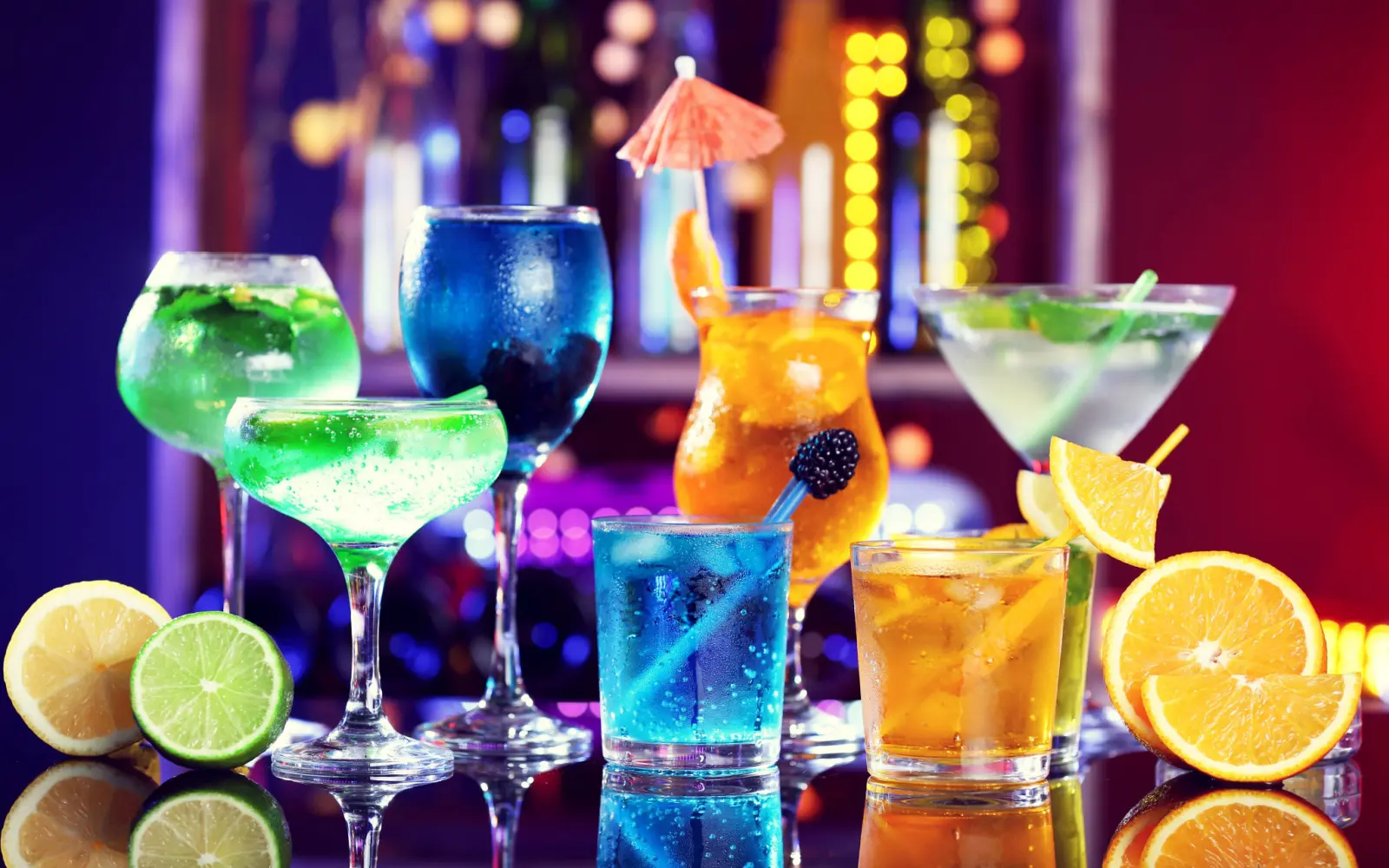With all the different types of beer, let alone wines, ports, liquors, and cocktails, it’s no surprise that every good bar has an enormous selection of glasses.
We have four types of bar glasses, and each has subcategories.
4 Types of Bar Glasses for Any Bar
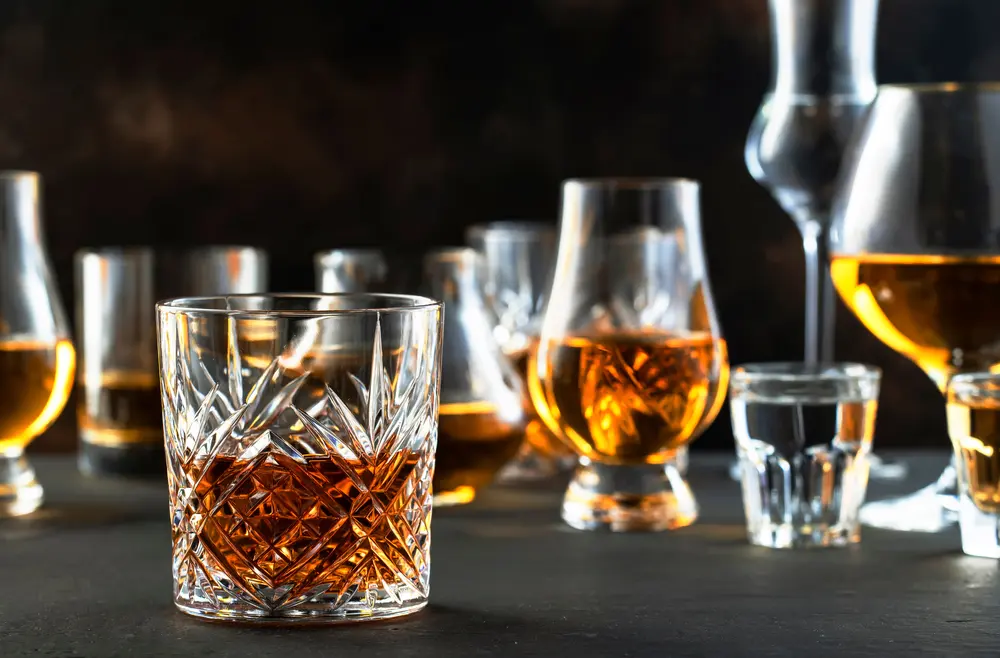
5PH/Shutterstock
Whether you operate a restaurant or neighborhood pub or you’re stocking your home bar, you will need a variety of glasses to serve different types of libations and cocktails properly.
The kind of drinks you plan to serve can dictate the glass types you’ll need, but almost every setup needs a few selections from each of the four main categories.
1. Beer Glasses
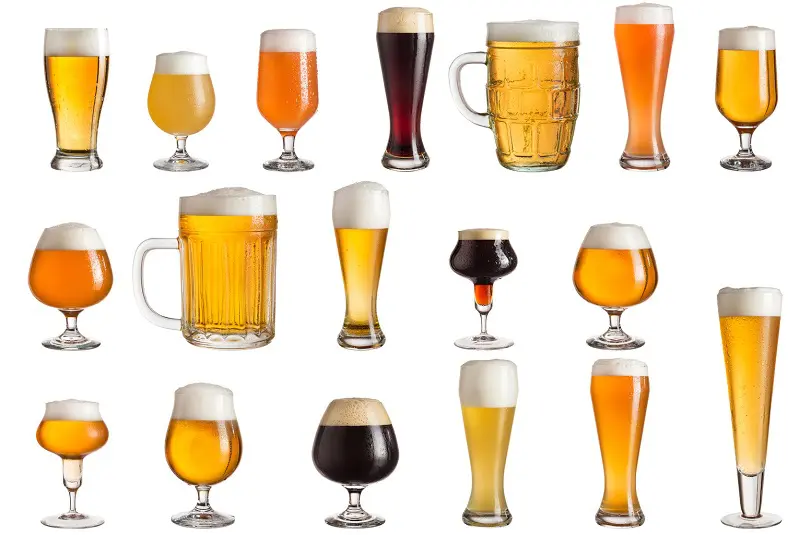
Impact Photography/Shutterstock
It’s hard to fathom just how many brands of beer are available, and most brands, from international operations to microbreweries, brew different kinds of beer.
The most common type of beer glass is the pint glass. It holds 16 ounces of beer and is a straightforward, no-nonsense bar glass. Pint glasses usually have straight sides that taper toward the bottom, so they stack neatly for storage.
Two kinds of pint glasses that go beyond strictly practical use are the Imperial pint glass and the Nonic pint glass. Imperial pints have a curve in the middle, giving them a bulbous look, and Nonic glasses have a short bulge just under the rim.
This curve helps separate the foam from the beer and often gets paired with darker beers. It also gives the glass its name. Since the bulge is wider than the glass’s lip, if the glass gets knocked over, the lip is a lot less likely to chip or get nicked, hence the “no-knick” name.
Other beer glasses include:
- Pilsner glasses. Taller than pint glasses, pilsners are curved at the top with a narrow bottom designed to collect sediment at the glass bottom, away from the drinker’s taste buds.
- Flight glasses. Many establishments offer beer flights. These require smaller portions, so flight glasses often look like miniature pint glasses.
- Mugs. They have handles, which help prevent the drinker’s hand from warming the beer as he holds the glass. These bar glass types usually sport much thicker, heavier glass than others, which helps insulate the beer from body heat.
- Stemmed glasses. Looking something like wine glasses, stemmed glasses often have a rounded shape sitting atop their titular glass stem. Sometimes glassmakers employ the shape to enhance the taste of a beer, and sometimes the glass serves to keep beer colder longer, much like a mug.
- Novelty glasses. We all know that one dad with a beer mug shaped like a cowboy boot. The novelty and specialty glasses usually go hand-in-hand with a promotion or a bar’s branding.
2. Wine Glasses
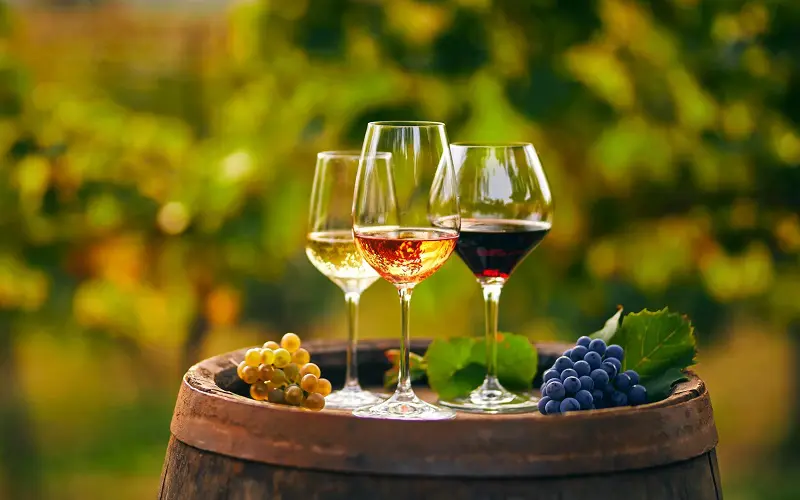
Rostislav_Sedlacek/Shutterstock
A wine glass usually has three parts: the base (sometimes called the foot), the stem, and the bowl.
While some restaurants and homeowners may only use one type of wine glass, connoisseurs and wine-centric establishments invest in different glasses to enhance various wine types.
The wine bowl’s shape allows the wine’s nose to collect at the top of the glass, but some wines can benefit from different shapes, hence the various wine glass designs.
Glasses for Red Wine
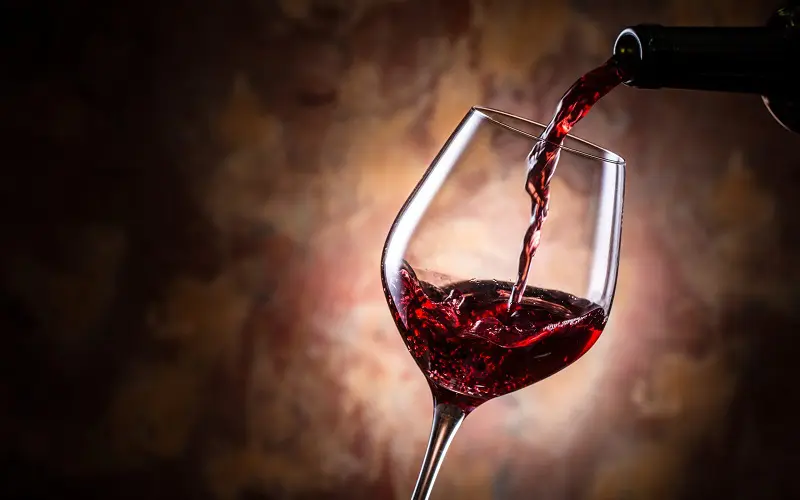
jazz3311/Shutterstock
Because red wine benefits from oxygen, red wine glasses usually come in wider bowl sizes than the glasses for white wines to allow the wine to breathe.
With different grapes, a dizzying array of wine varieties exists, and the glass in which they’re served can enhance many wine types.
- Merlot glasses also work with Bordeaux and Cabernet wines. They are taller than other wine glasses, have a large bowl, and taper quickly at the top.
- Pinot Noir glasses go with pinots and burgundies. They are the shortest red wine glasses. They are also the widest, so they have a short, squat look to them.
- Shiraz glasses are also for Malbecs, Sangiovese, and Syrahs. With a narrower taper than a merlot glass, this glass softens flavors by preventing too much wine from hitting the palette at once. It is shorter and not as rounded as the merlot glass.
Glasses for White Wine
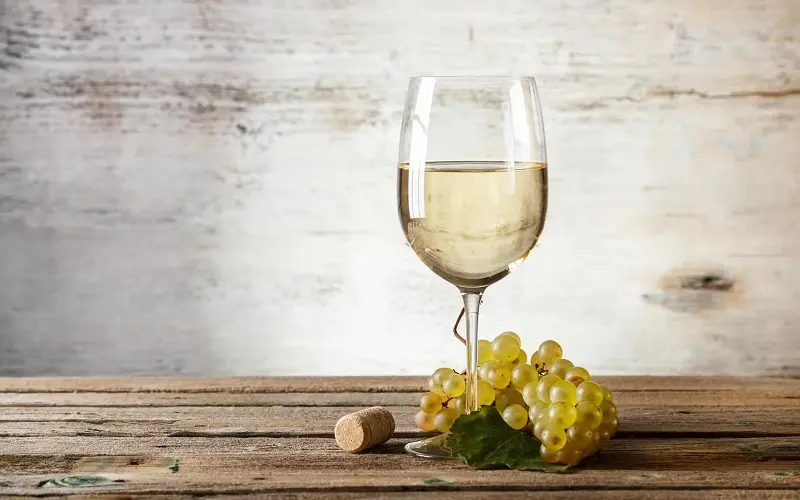
grafvision/Shutterstock
White wine doesn’t need to breathe as much as red, and its aromas are subtler and won’t overpower the drinker’s nose if they collect at the glass’s top.
As a result, white wine glasses are generally shorter with narrower bowls than red wine glasses.
- Sauvignon Blanc glasses also hold Rieslings. They usually have long stems, and their bowls are narrow and only slightly tapered to allow for less oxygen to reach the wine.
- Chardonnay glasses have larger bowls. The bigger size allows a more full-bodied white wine to breathe a bit. Chardonnay glasses are taller than Sauvignon Blanc glasses, too.
Champagne Flutes
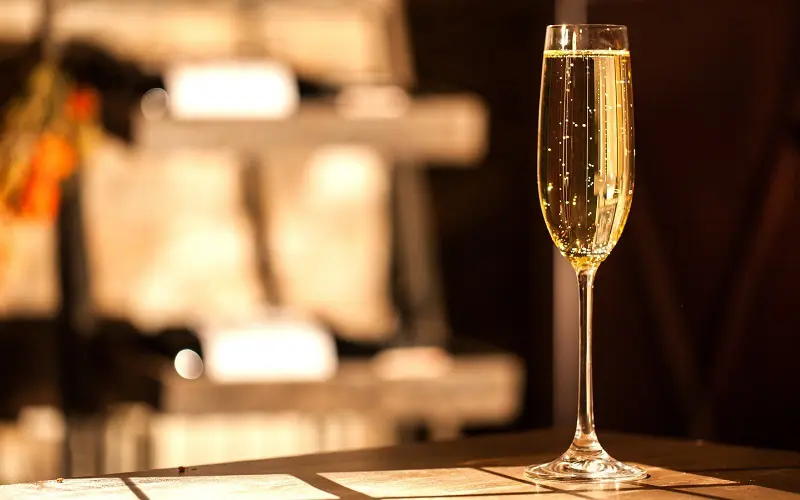
Andrii Kobryn/Shutterstock
Because they rely on the bubbles to help define their flavor, champagnes can use a little help from the glasses in which they’re served.
With a narrow bowl, a narrower glass bottom, and a tapered shape, champagne flutes allow bubbles to form along the surface of the glass’s inside and stream to the surface.
3. Liquor Glasses
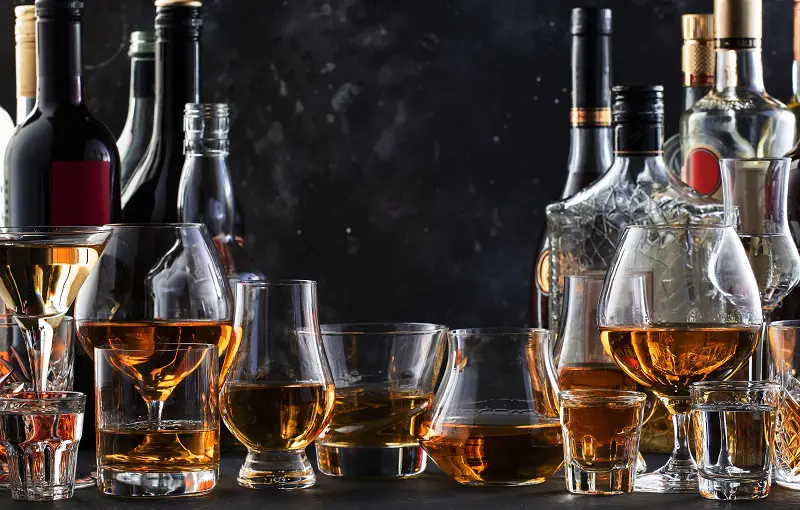
5PH/Shutterstock
We’ll differentiate here between glasses usually used for drinks that are only (or nearly all) liquor and glasses designed for cocktails and various mixed drinks.
- Shot glasses usually hold 1.5 ounces of liquor. Bartenders can use them for measuring shots when mixing drinks, or patrons can drink shots from them. They’re short, small, and often collectible.
- Shooter glasses are taller and can hold more than one shot’s worth of liquid. Some specialty shots come in these glasses.
- Old-fashioned glasses are also called lowball glasses. They’re short and round, with no curvature to the vertical shape. Bartenders can muddle ingredients in them since they have a wide mouth, and many people enjoy liquor on the rocks in these.
- Tumblers are also generally for sipping something like whiskey on the rocks. They’re simple glasses with flat bottoms and straight sides, and they’re a bit taller than old-fashioned glasses.
4. Cocktail Glasses
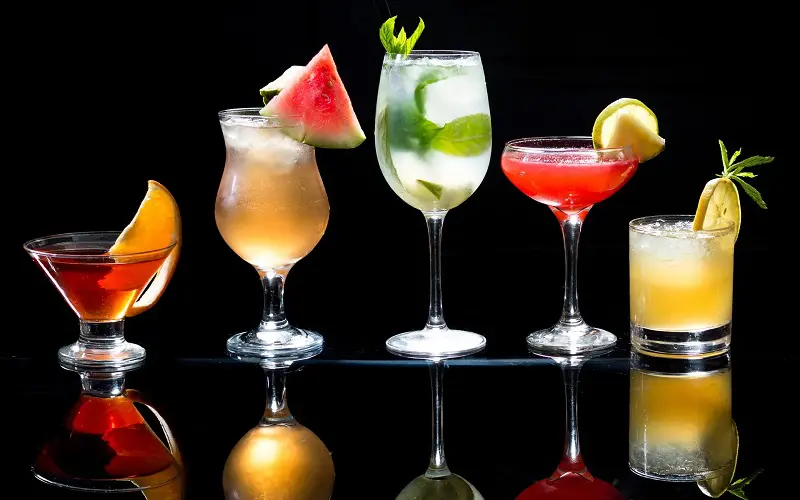
petereleven/Shutterstock
Once you start mixing liquors with mixers, fruit, and all manner of other items, you open up the possibility of nearly unlimited drink possibilities.
Many tried-and-true adult beverages, as with wine and beer, rely on a certain type of bar glass, so there are many in this category.
One group of similar glasses contains highball, Collins, and sling glasses. Each of these three is taller than a lowball and relatively narrow.
The sling is wider at the top and is often the glass of choice for Long Island Iced Tea. Collins glasses are the tallest of the three types.
Highballs, Collins, and sling glasses all hold at least 12 ounces of liquid, though depending on the style, some incarnations hold more than that.
Martini glasses are somewhat specialized, though bartenders serve other drinks in them from time to time. Along with cocktail and margarita glasses, they usually have tall stems and wide bowls.
The martini’s glass bowl is usually conical rather than curved, and the margarita glass often has a very wide but shallow bowl. The Delmonico glass holds five or six ounces and resembles a champagne flute, though it’s shorter.
Also called sour glasses, they most often contain whiskey sours. Brandy snifters have voluminous bowls and short stems.
Brandy aficionados rely on the glass to enhance the flavors, and they may argue that the glass is almost as important to the drinking experience as the brandy itself.
Niche glasses are those for one drink in particular. Think of the Moscow Mule glass, which isn’t glass at all, but a copper cup. An Irish coffee glass usually doesn’t get used for any other drink, and it looks like a cross between a coffee mug and a wine glass.
Another niche glass that’s extremely popular and recognizable is the hurricane glass. The hurricane drink was invented in New Orleans at a bar called Pat O’Brien’s.
It contains two kinds of rum and lots of fruit. The hurricane glass holds about 20 ounces and owes its name to the fact that it resembles a hurricane lamp.
As promised, there are so many other types, some for specific drinks and some whose purpose has more to do with style and presentation than enhancing flavors or allowing the circulation of air.
They include:
- Cordial glasses
- Coupe glasses
- The grappa glass
- Liqueur glasses
- Nosing glasses
- The Poco Grande
- The Pousse Café
- Wobble glasses
- The zombie glass
Frequently Asked Questions
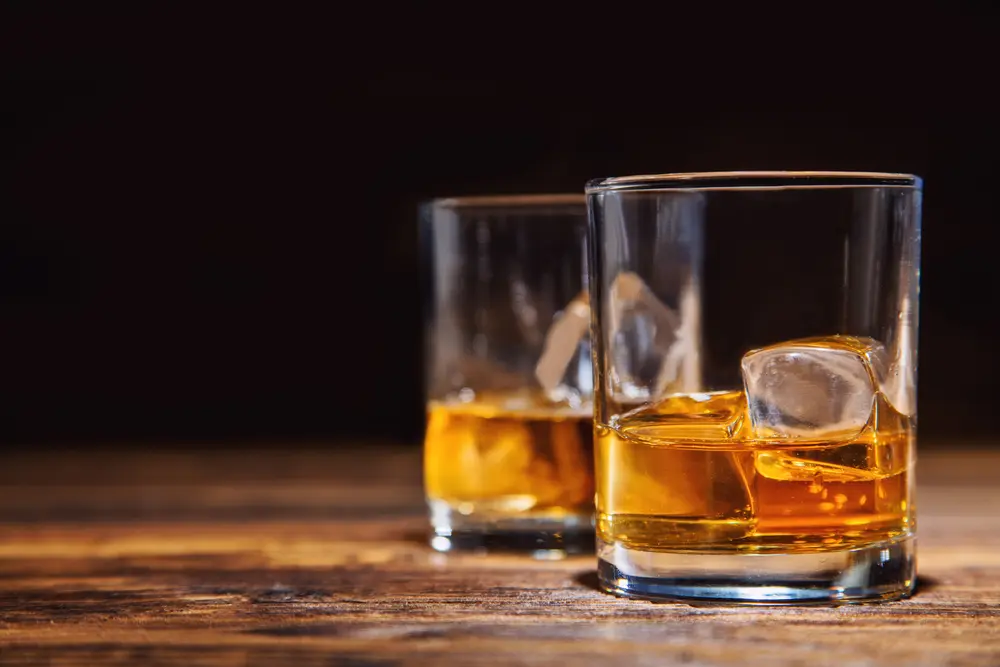
Jag_cz/Shutterstock
With so many glasses, there are so many questions. After all, if you’ve never heard of a particular drink, what are the chances you know what glass it needs?
What are small bar glasses called?
You’re probably thinking of a shot glass or a shooter. They usually hold less than three ounces of liquid and are for small drinks or straight shots of liquor.
What are different-shaped glasses used for?
Mostly, glass shapes are not just for appearances but rather help to enhance the flavors or aromas of a given beverage.
With a smaller mouth, the glass can help concentrate aromas so the drinker can better enjoy them.
A larger mouth or a curved lip can affect how the liquid interacts with the taste buds, altering or enhancing the flavors.
What is a large shot glass called?
The larger shot glass is a shooter and usually contains a specialty shot that’s more than just one 1.5-ounce serving of a single liquor.
What is a jigger?
A jigger is bartending tool used as a measuring device. While a bartender can pour a shot’s worth of liquor into a shot glass, sometimes a recipe might call for less alcohol than that.
A jigger is a 1.5-ounce cup with a .75-ounce cup attached to its bottom. It’s a double-ended cup that allows for quick and accurate measurements.
How are the glasses used in the bar?
They’re most often used to serve drinks, but that’s not all.
Some bartenders will use a pint glass with a cocktail shaker when it’s time to mix two or more liquids by shaking them together. The pint glass acts as a lid for the shaker.
Bartenders may also use shot glasses to measure ingredients into a drink, and they might muddle in a glass or otherwise prepare a drink in a bar glass other than the one in which it’s ultimately served.
Wrap-Up
So, how many types of bar glasses are there? As you can see, a lot.
There are four main types: beer, wine, liquor, and cocktail glasses, but each type has at least a few subcategories.
The right bar glass can make or break your party or drinking experience!

